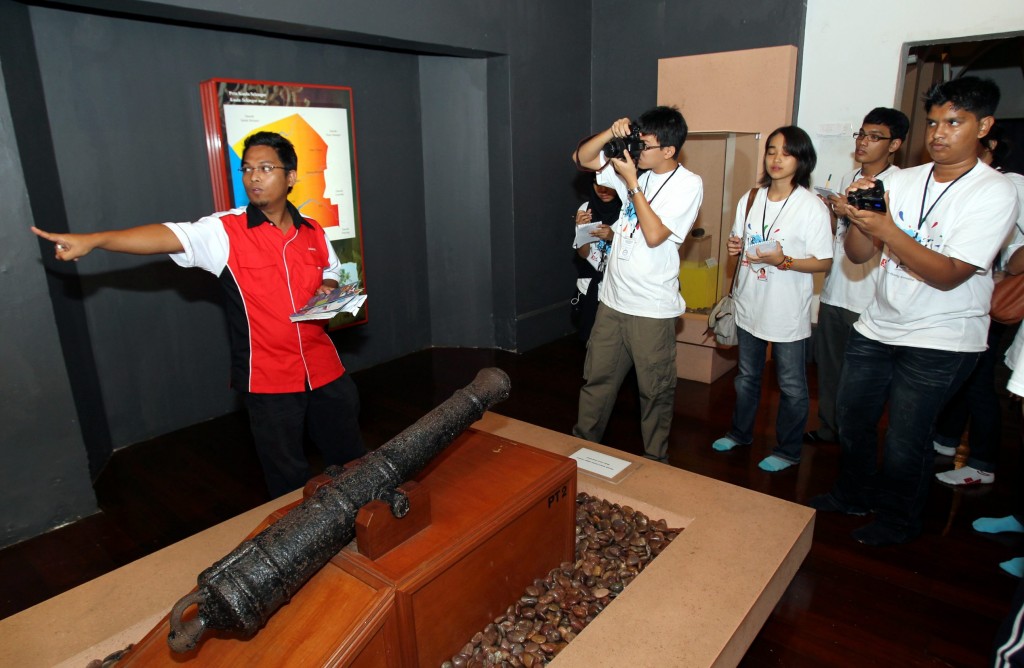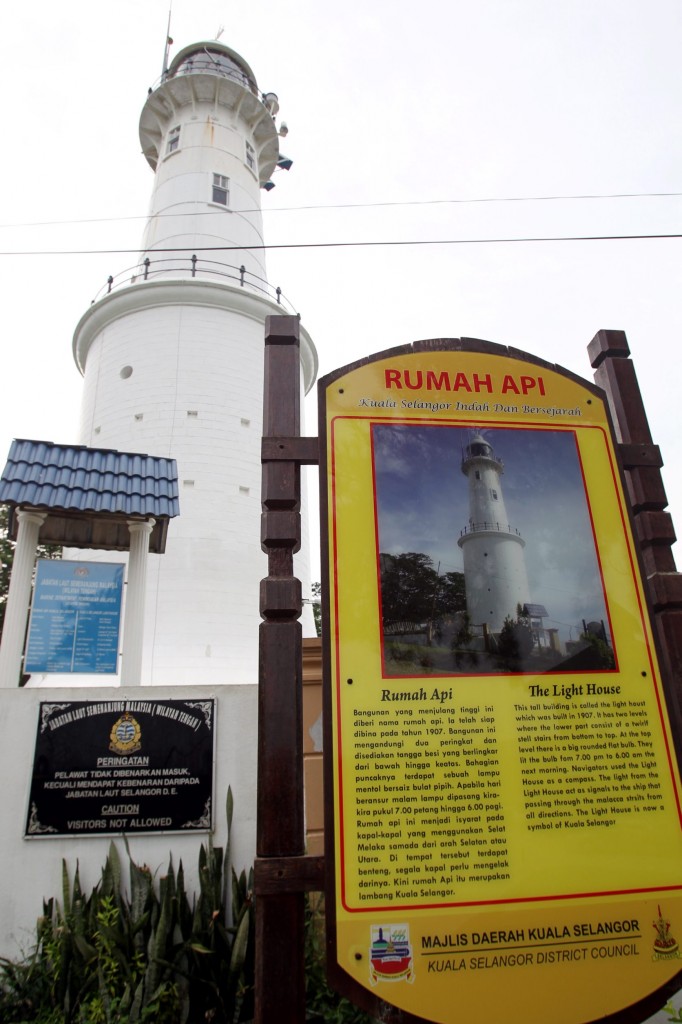Not many museums have a “welcoming party” that is as amusing as the one at the Historical Museum of Kuala Selangor. Here, cheeky monkeys entertain people as they hike up the hill leading to the main building of the museum.
The museum lies on top of Bukit Malawati and is located within an ancient fort that dates back to the 17th century. Intimidating cannons are scattered throughout the compound of this historical, place giving visitors a glimpse of what was once an impressively protected fort.
“The Dutch invaders brought in the cannons to replace the inferior weaponries that were initially used by the locals. This was done to fortify the area better,” says Mahadi Baharin, the museum curator.
Stepping into the museum, visitors are guided by Mahadi through all seven sections of the museum. He stops to tell the tale that each of them depicts. There are a lot of artefacts around the museum, some of which date back to the dawn of the Malay Sultanate, while others originate from as far as China.
Research has led to the discovery of ancient maps in China that were used by Admiral Cheng Ho on his many voyages. These artefacts are proof of the glory of the state during its heyday.
A wall near the exit of the museum was adorned with the initial version of the Selangor flag. Its pattern bears a striking resemblance to the primitive version of the Dutch flag. The design of the Dutch-inspired state flag evolved into the one we see today.
Outside of the casino museum, there is a lighthouse that towers over Bukit Malawati’s otherwise undulating terrain. It was once used to guide ships sailing on the Straits of Malacca.
“The lighthouse was constructed in 1907 to guide the ships to shore. It is still used until today,” says museum head Rizal Effendy Mohamad Zainudin.
Down the road from the museum lies a poisoned well or “Perigi Beracun”. Once filled with poison, the well was used to punish criminals who were considered traitors.
Bukit Malawati is thriving as a tourist destination as it houses plenty of interesting remnants of the rich past. The museum received about 80,000 visitors in 2011, though many people still don’t know much about the place.



Tell us what you think!